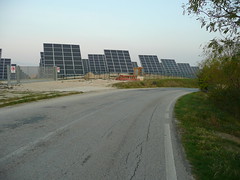
California’s Renewable Auction Mechanism has delivered an average highest bid of US8.9c/kWh
Bids for the ACT government’s innovative solar tender are due to be filed by the close of trade on Tuesday, with speculation mounting that there could be some jaw-dropping offers that could help reshape the future of energy generation in Australia.
The ACT is accepting offers for the first 40MW of its planned renewable energy tender. Developers of solar PV projects ranging in size from 2MW to 20MW are invited to set the tariff they will receive from the ACT government, in an auction designed to allow the market, rather than bureaucrats, to set the price.
When we wrote about the tender in February, we suggested a price of 12-15c/kWh could be achieved, an expectation that has been boosted following some spectacular results announced late last week from similar auctions in California.
California’s Renewable Auction Mechanism has delivered an average highest bid of US8.9c/kWh, almost exclusively for solar PV, although one of the three utilities involved in the auction did accept a bid from a geothermal plant and another from a wind plant.
Like the ACT auction, the California system also invites bids for a long term tariff (20 years) for projects up to 20MW. The system of bidders setting their own price and an expedited regulatory process is designed to get projects built more quickly than has been seen under either the MRET or the grants-based mechanisms deployed by the Federal Government. (The bids should also finally convince the government that its forecast cost curves in the draft energy white paper, which relies on predictions of solar PV to “fall” to 34c/kWh by 2035, are absurdly wrong).
According to California reports, Southern California Edison received 92 offers totaling more than 1200MW, (91 were for solar PV), and accepted 7 offers – two of 20MW; one 12MW; one 9MW; and three 2MW. PG&E received received 122 offers totaling 1470 MW and accepted four contracts – one 14MW geothermal power plant; one 9MW wind power project; two 20MW solar PV projects. San Diego Gas and Electrict accepted two solar PV projets totaling 15 MW out of a total 32 submitted.
In the US, the California results are being touted one of the first big milestones that has the potential to change the narrative around solar energy. It certainly validates what Energy Secretary Stephen Chu said about the cost curve for solar in the country, and its potential impact on the broader energy industry.
Several dozen bids are expected in the ACT auction, which will allocate up to 40MW of capacity, with around 20MW to go in a “fast track” process to developers that can quickly prove their bona-fides (and have grid connections and have access to land).
There are a couple of reasons why the ACT auction results may not go down low as the California results. It is not just about module prices – because they will be about the same as in the US – but due to the balance of system costs, which make up at least half the price. Australia’s lack of experience in deploying solar at utility scale – there has already been a fair bit of it in the US, and Australia is only about to begin installing the panels at its first 10MW project in WA later this week – means that the cost of solar PV is probably 2c-4c/kWh more expensive than the US.
via Renew Economy ᔥ
Bookmark this page for “solar auction” and check back regularly as these articles update on a very frequent basis. The view is set to “news”. Try clicking on “video” and “2” for more articles.
>







